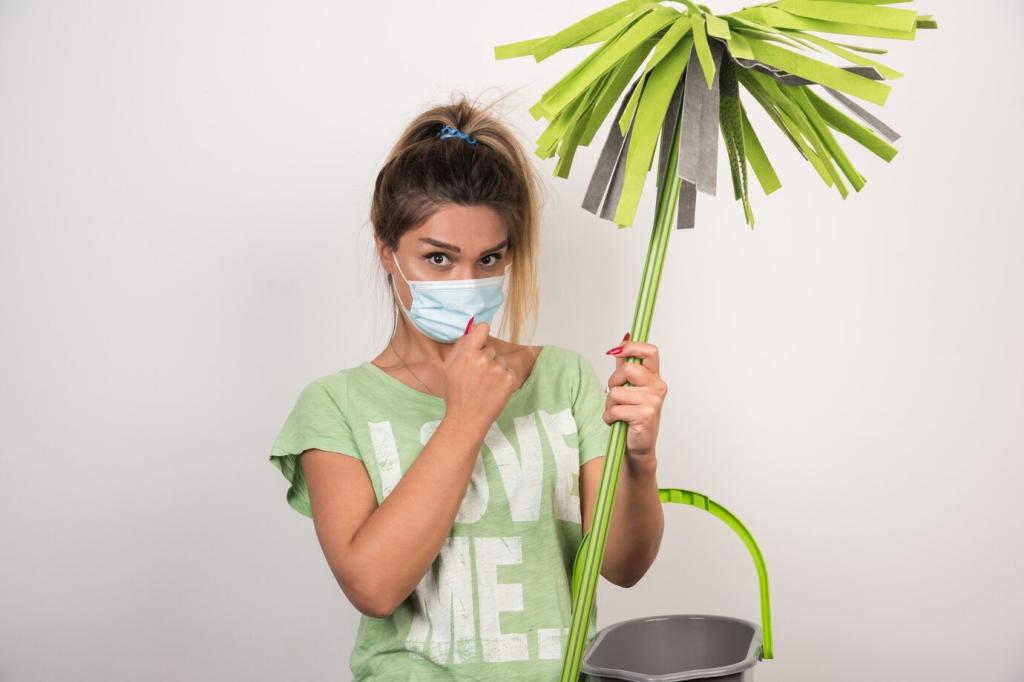
Sustainable Ways to Maintain Upholstery
Discovering sustainable methods to care for upholstery is essential for those who wish to blend environmental responsibility with the desire to keep their living spaces clean and comfortable. By choosing eco-friendly techniques, you ensure that your furniture looks beautiful while minimizing your impact on the environment. This guide explores various strategies and practices that can prolong the life of your upholstery, reduce the use of chemicals, and contribute to a healthier home. Sustainable upholstery maintenance not only conserves natural resources but also supports a more mindful approach to everyday living. Embrace these methods to protect both your furnishings and the planet.
Choosing Eco-Friendly Upholstery Materials
Organic and Natural Fibers
Organic and natural fibers, such as cotton, linen, hemp, or wool, are renewable resources that biodegrade much more readily than synthetic options. These materials are produced without toxic pesticides or chemicals, significantly reducing their environmental impact. When used as upholstery fabrics, organic fibers often display unique textures and breathability, enhancing both aesthetics and comfort. Maintenance is also easier with these materials since they generally resist attracting dust and allergens. Opting for certified organic textiles ensures not only sustainability but also quality, as these fabrics typically undergo strict environmental and ethical testing. Investing in furniture made from organic or natural fibers supports a more eco-conscious lifestyle and reduces demand for petroleum-based fabrics.
Recycled and Upcycled Fabrics
Embracing recycled or upcycled fabrics is a powerful way to reduce waste and give new life to materials that might otherwise end up in landfills. These fabrics are often sourced from post-consumer products like plastic bottles or discarded textiles, transforming waste into functional and attractive upholstery. Aside from environmental benefits, recycled fabrics can surprise you with unique designs that add character to your space. Maintenance of these materials is similar to traditional fabrics, though it’s wise to consult care instructions to prolong their longevity. Upcycling old garments or household linens into upholstery is also a creative way to personalize your furniture while keeping materials out of the waste stream, encouraging a circular approach to home decor.
Avoiding Harmful Chemical Treatments
Many conventional upholstery fabrics are treated with stain-resistant, fire-retardant, or antimicrobial chemicals that can off-gas volatile organic compounds and pose health risks. Opting for untreated or naturally protected fabrics not only benefits your indoor air quality but also supports sustainable manufacturing practices. Some natural fibers, such as wool, offer inherent resistance to fire and moisture without the need for added chemicals. If you must use treated fabrics, look for those certified by reputable environmental standards to minimize harmful effects. By making informed choices, you foster a safer home environment and contribute to the global shift towards non-toxic, sustainable furniture production.
Green Cleaning Techniques for Upholstery
01
Plant-Based and Natural Cleaning Solutions
Harnessing the cleaning power of plants by using household items like distilled white vinegar, baking soda, or castile soap ensures gentle yet effective care for most upholstery fabrics. Plant-based solutions break down dirt and odors without introducing harsh chemicals or artificial fragrances into your home. Simple mixtures—such as diluted vinegar for deodorizing or a light baking soda sprinkle to absorb moisture—provide effective alternatives to commercial products. These ingredients are biodegradable and safe for both your family and the wider ecosystem. By avoiding toxic solvents and opting for natural formulas, you help maintain the integrity of your upholstery fibers while reducing your environmental impact.
02
Steam Cleaning with Minimal Water Usage
Steam cleaning offers a resource-efficient way to sanitize and refresh upholstered surfaces. Using the power of heat, steam cleaners lift dirt and kill bacteria without relying on excessive moisture or chemical agents. This method not only deep cleans fabric but also helps reduce the risk of mold or mildew developing under the surface. By controlling the amount of water released, you minimize drying times and decrease the likelihood of water stains or damage. Steam cleaning can be performed periodically to maintain a high level of hygiene without introducing pollutants into your home, making it a sustainable and effective cleaning option.
03
Routine Maintenance to Prevent Dirt Buildup
Proactive, gentle care is fundamental for extending the life of your upholstery. Regular vacuuming with a brush attachment helps remove dust, pet hair, and allergens before they embed deeply in fabric fibers. Addressing spills immediately with a damp, clean cloth prevents stains from setting and reduces the need for deep cleaning. Occasional gentle brushing can also help maintain the appearance and structure of certain upholstery types. By incorporating simple routines that use little energy and no chemicals, you cut down on resource-intensive cleaning processes while keeping your furniture fresh and inviting for years to come.
Prolonging Upholstery Lifespan Sustainably
Investing in washable, natural-fiber covers and throws provides an easy and stylish way to protect upholstery from daily wear and tear. These items shield fabrics from stains, sunlight, and pet activity without altering the original look of the furniture permanently. Protective covers can be removed and cleaned regularly in an eco-friendly manner using gentle detergents, reducing the frequency of full upholstery cleaning. By choosing covers made from organic or recycled materials, you further reinforce your commitment to sustainability. This proactive approach helps preserve the quality of your upholstery, ultimately delaying the need for reupholstering or replacement.
